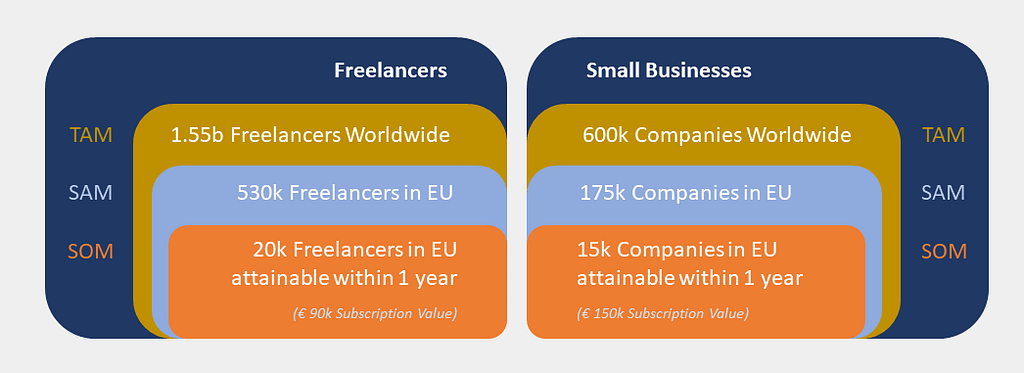This article is part 1 introducing marketing strategy of the metrics mini-series on sales and marketing.
Metrics as part of your marketing strategy
All successful marketing strategies have one element in common: easily defined and measured metrics to reach agreed upon goals. The range of possible metrics is broad, and can include the size of the target audience, amount of brand awareness, or number of online views and shares. This ensures that the goals are known by all team members before the project starts, so that everyone works together towards the same results. By constantly monitoring these metrics, it is possible for the marketing team to adjust their campaign if they notice that some parts are delivering a higher or lower ROI than expected. Additionally, these metrics can be shared with investors to encourage further investments.
Let’s take a look at an example: a SaaS provider launching a collaboration workflow tool for companies who work with different freelancers. Its new minimum viable product (MVP) has recently entered the market and has been developed to attract the attention of the first potential customers.
Before we start to plan our marketing strategy, we define our potential target audience in as much detail as possible. In this blog we cover three metrics that assist with this.

Total addressable market (TAM)
his is the total market for your product or service. In other words, the customers who are interested in the type of product or service your company is offering.
For our SaaS provider, this could divide the market into companies of a certain size or turnover, active in particular sectors, or located in a specific country or region.
Serviceable available market (SAM)
Tis is the part of the market that you are targeting based on your business model and service possibilities. This metric shows investors what the long-term growth potential is.
Our SaaS provider would need to take a critical look at the TAM and analyze which parts of this market are interested in the new SaaS tool.
Serviceable obtainable market (SOM)
This is the percentage of SAM that you can realistically obtain within a certain time period. Being able to deliver this on time will show your investors that you are credible and, hopefully, help to increase your market share compared to your competition.
For our SaaS provider, this could be the percentage of the SAM where they already have prior contacts for a personalized approach or a selected part of the SAM using a narrower focus on company size, industry, or geographical location.
Based on the information generated by establishing these metrics, we can establish our marketing strategy to generate as many qualitative leads as possible with the aim of converting these leads into customers.
The marketing strategy can be inbound, outbound, or a combination of the two.
Inbound marketing uses personal outreach via social media, content marketing, and thought leadership to focus on your target audience to entice an influx of interested visitors to your website, or outreach to your sales team. Once on your website, the visitors find content that speaks to them, for example by touching on their current needs (that your product or service can solve) or by providing content that they enjoy and share. This helps your company to get qualified leads and build up trust and credibility that turns into conversions.
Outbound marketing promotes product messages to as wide an audience as possible using generic outreach via TV commercials, online and offline adverts, radio commercials, cold calling, direct mailing, … This high level of visibility enables you to see the results of your efforts immediately through the immediate response from the market, allowing you to quickly adapt.
Talk to the experts
Are you interested in discovering the difference metrics can make for your marketing and sales activities? Contact CFOrent for expert help on implementing metrics throughout your company.
This is the first in a three-part blog series on metrics in marketing and sales. Click here to read part 2 on metrics and the marketing funnel and part 3 on how metrics assist sales.
